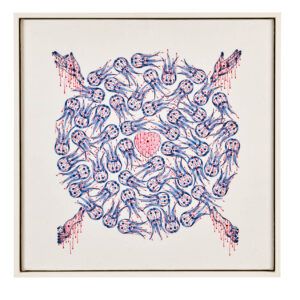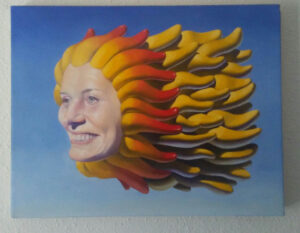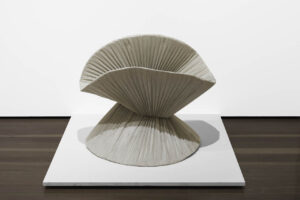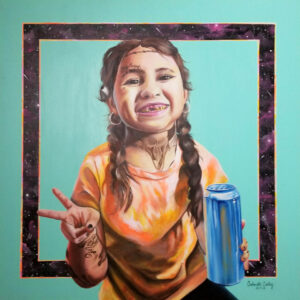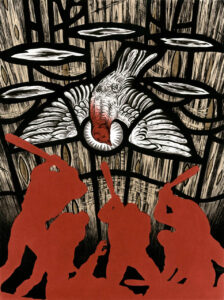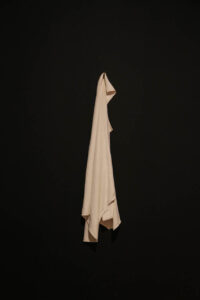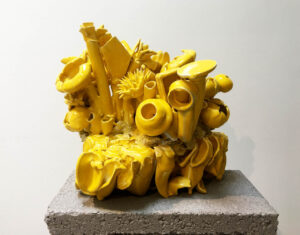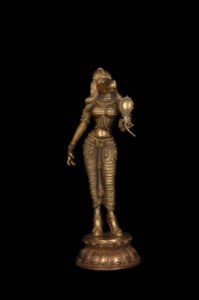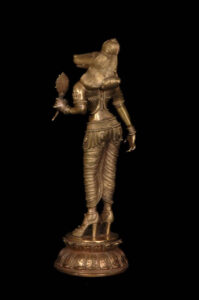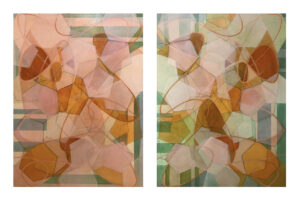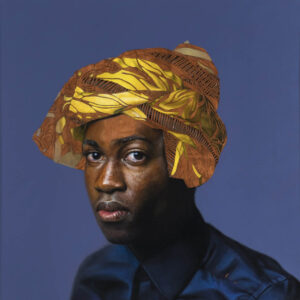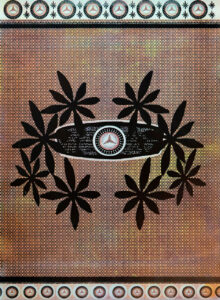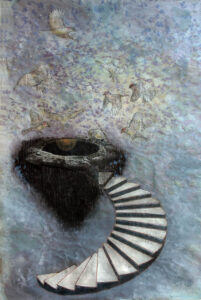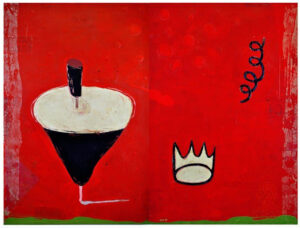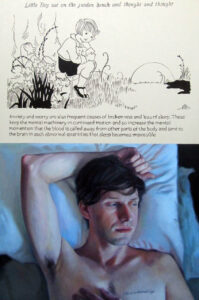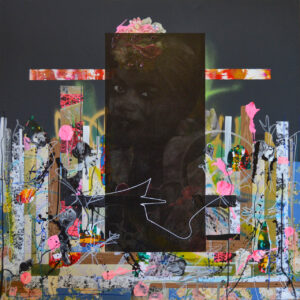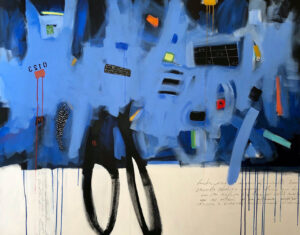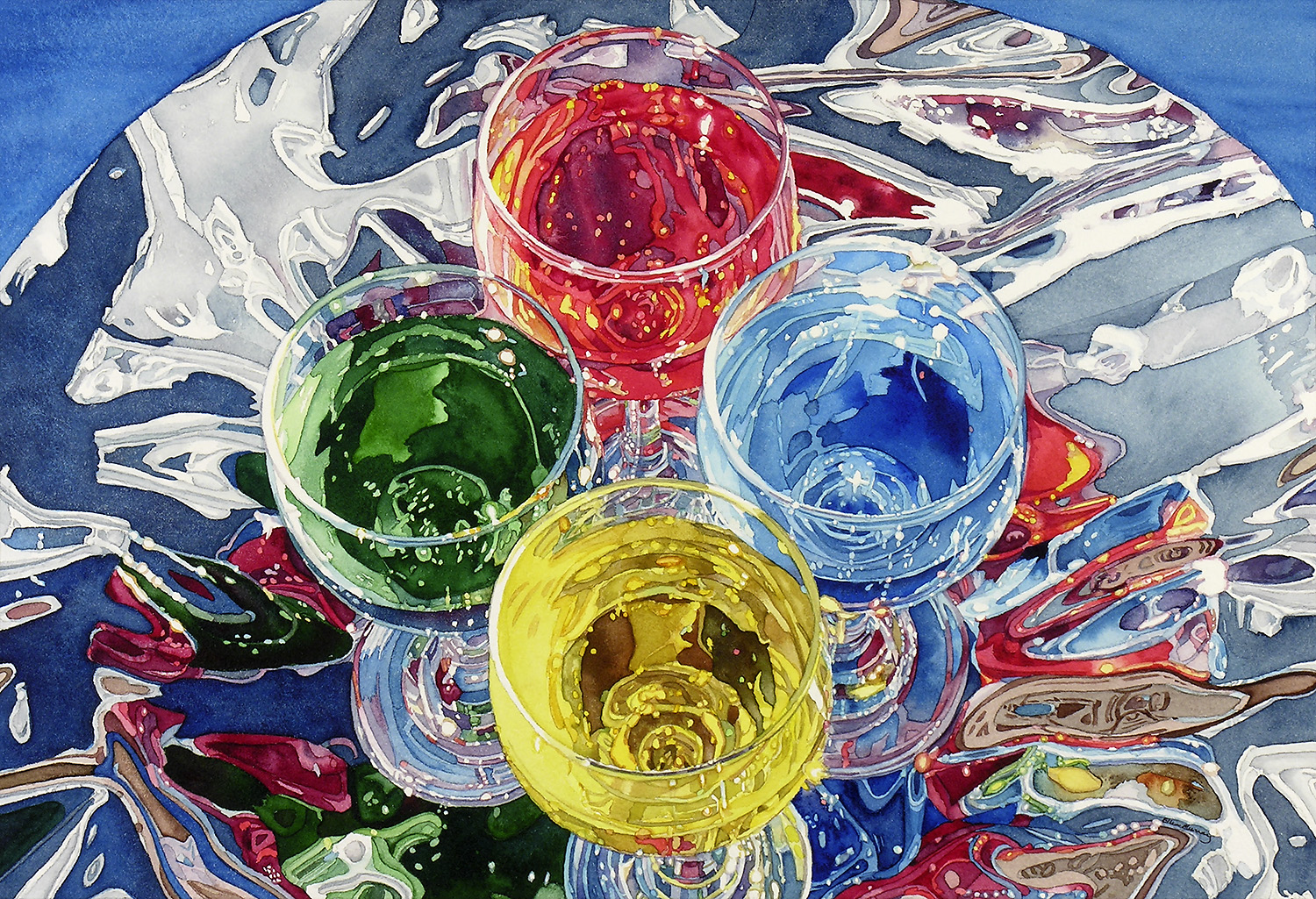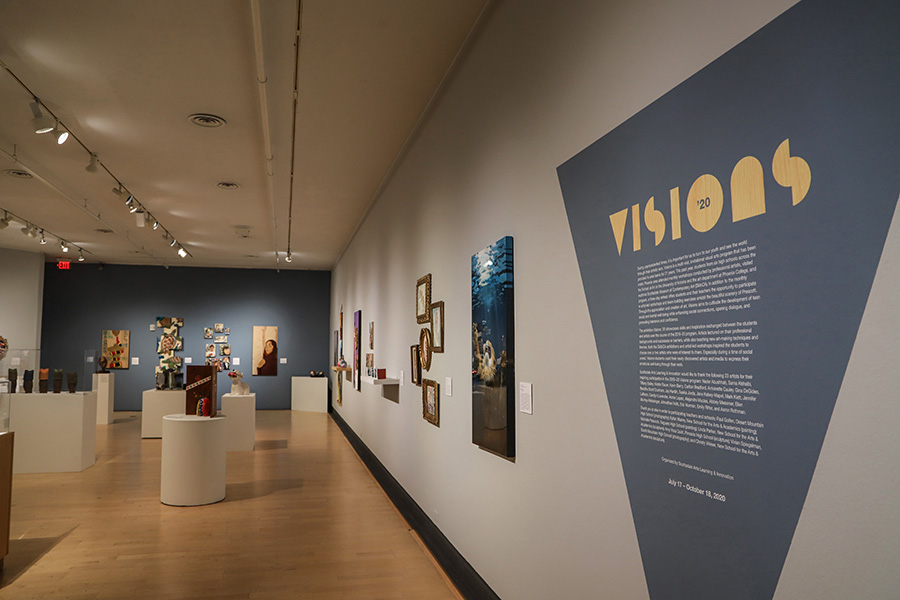Exhibition Quick Links:
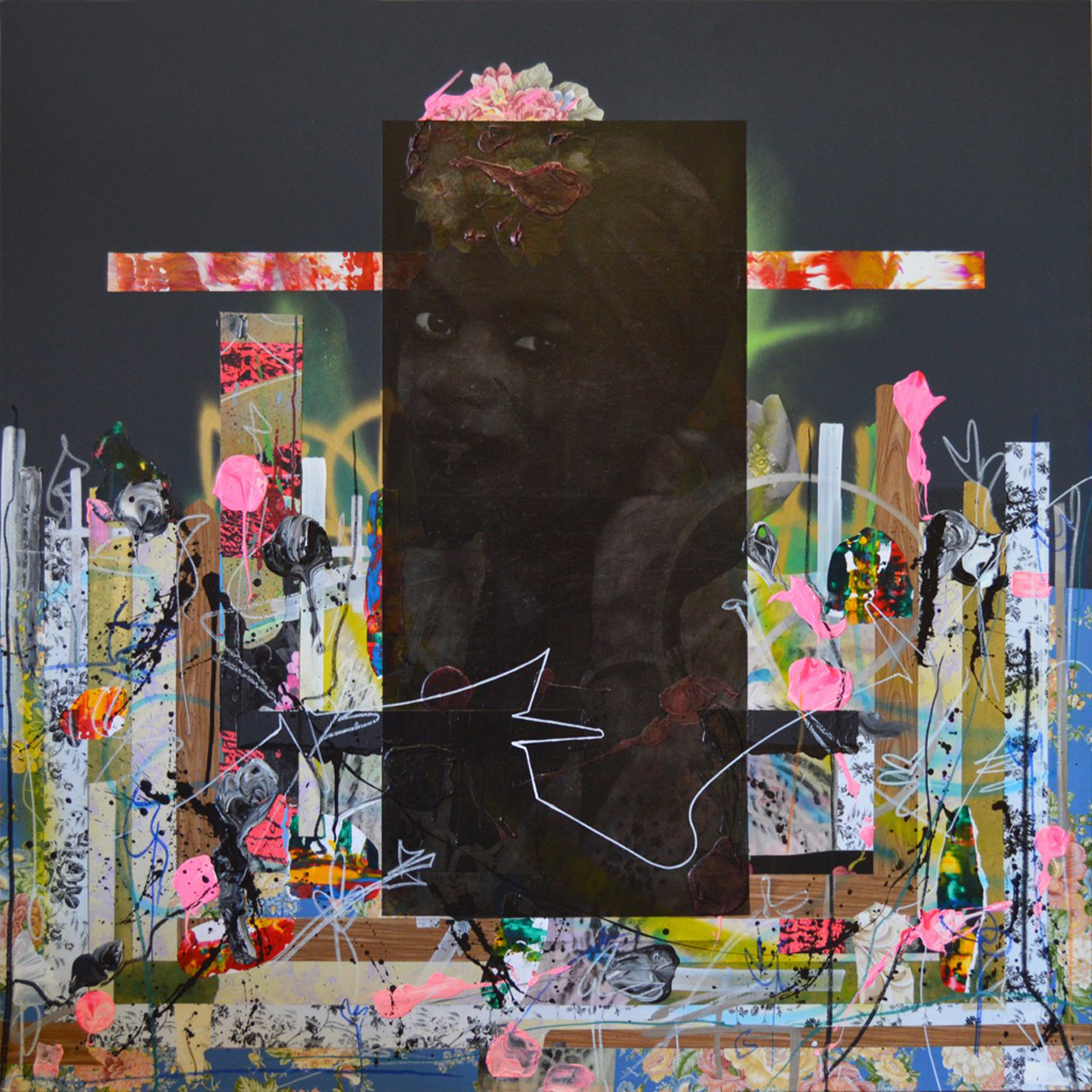
Fausto Fernandez X, Black Monolith, 2018
Collage, acrylic, oil sticks and spray paint on canvas
60 x 60
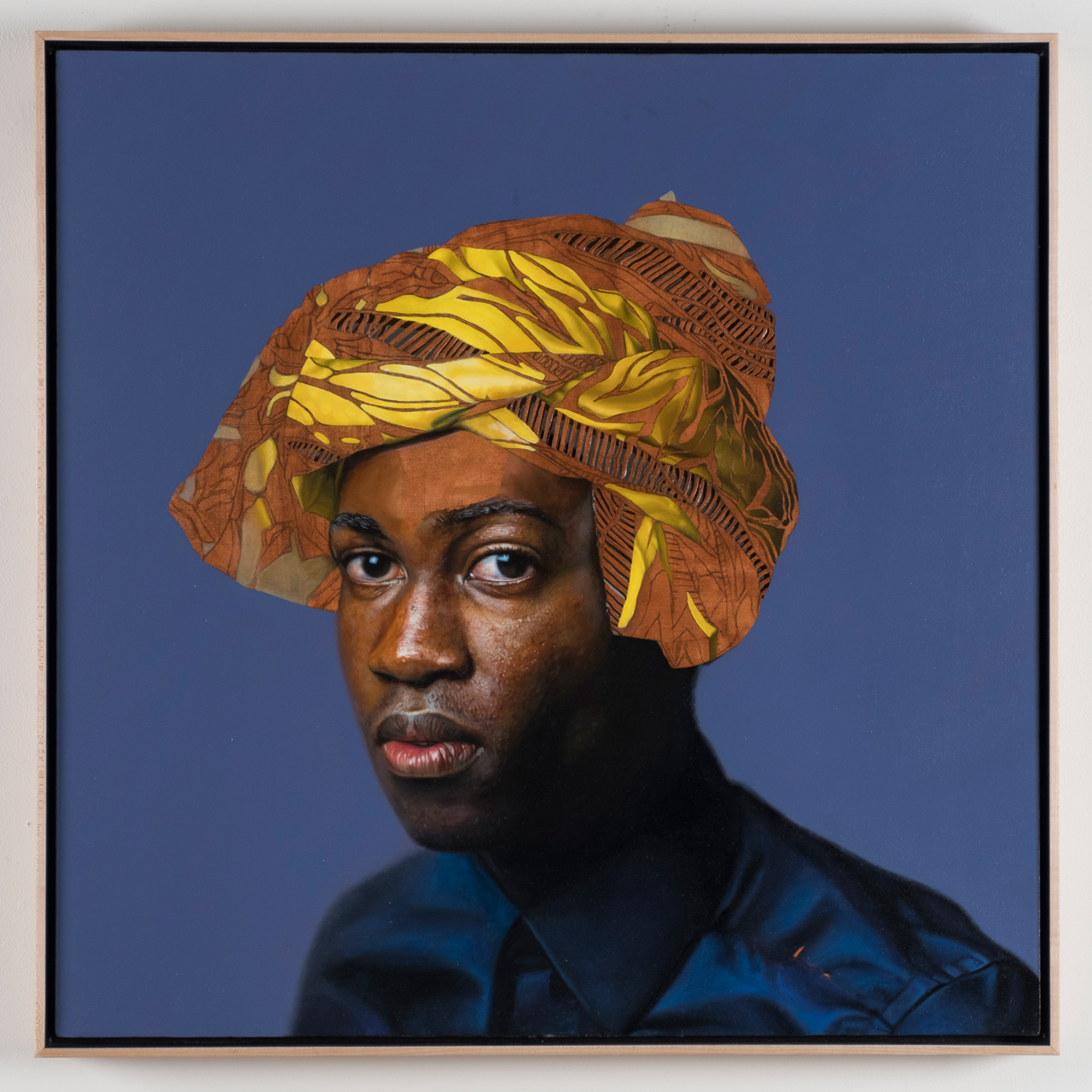
Papay Solomon, K.O.S. Knowledge of Self Self Portrait (2018)
Oil on Canvas, Mirror, 36in x 36in
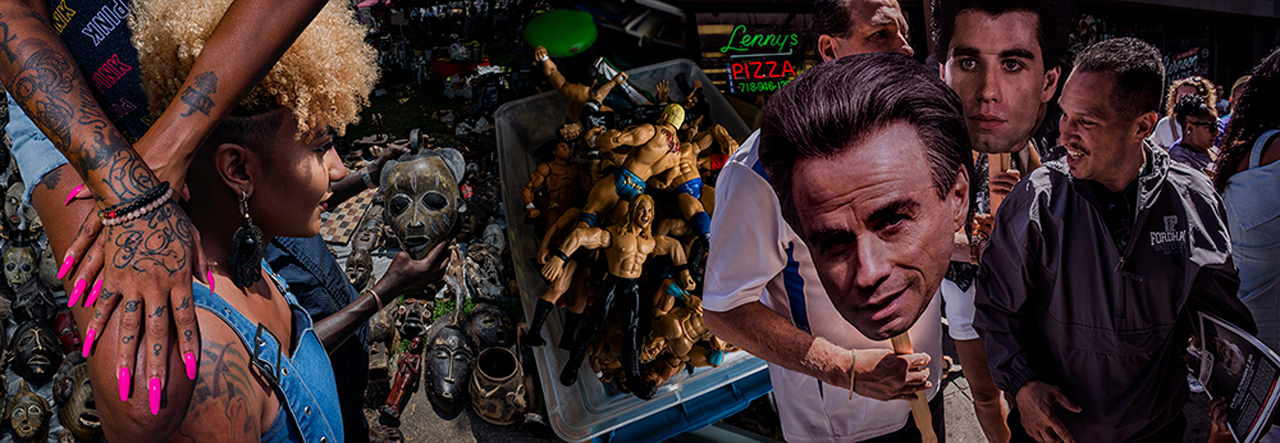
Stephen Marc, AFRAM Festival & Travolta Day (2019)
22.5” x 37.5” framed (9” x 26” image)
digital montage / inkjet print
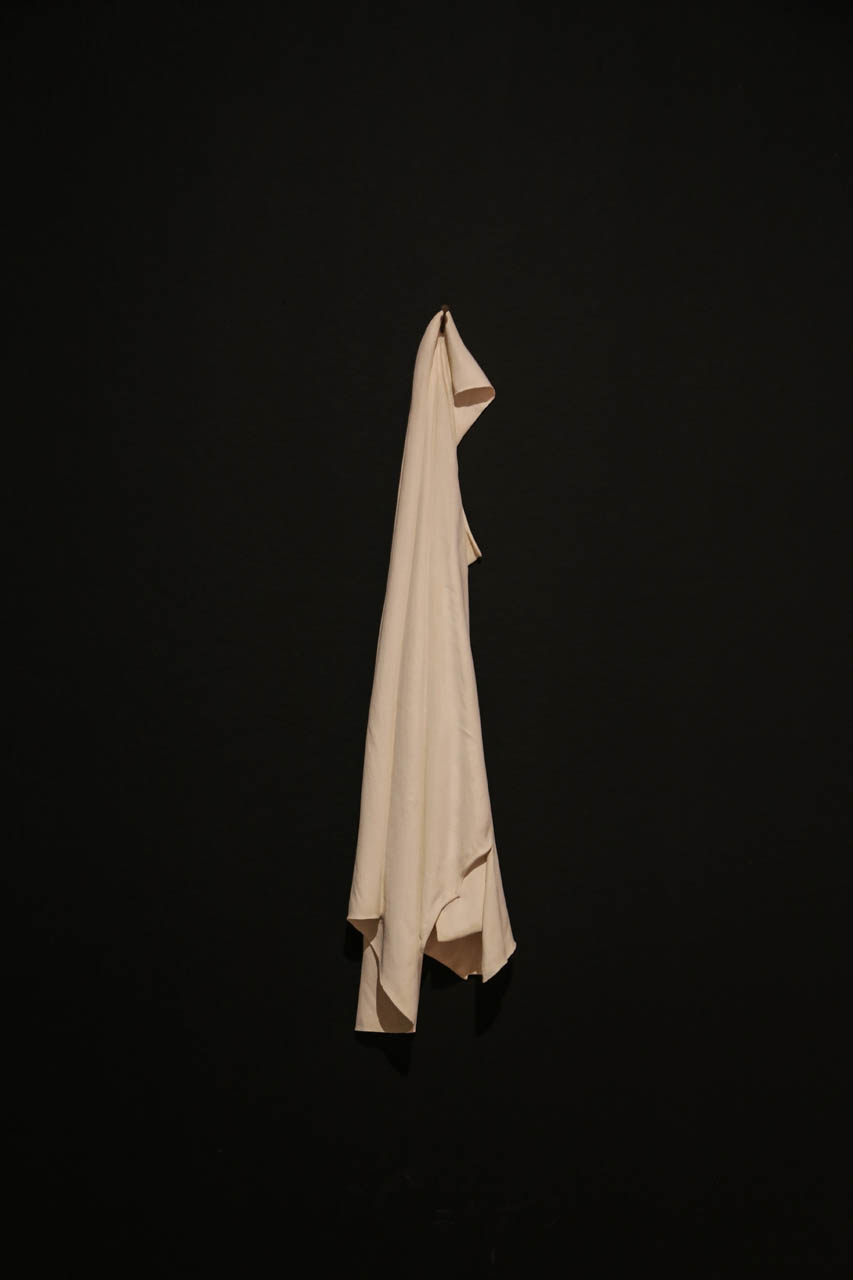
V-Vertical, 2015, Tom Eckert
Bleached basswood, 8″ x 33″ x 4″D
Group Exhibition
Viewpoints: How We Understand Art
This exhibition invites you to explore the Viewpoints you tend to use to learn about yourself, to consider other Viewpoints, and, perhaps, to open a conversation with another person about the art they enjoy and value.
Oct 29, 2020 - Apr 25, 2021
Exhibition Overview
Isn’t it interesting how the same artwork can yield a wide range of responses from different viewers? Viewpoints is a theory about aesthetic development that defines five ways people view art. Depending on a person’s experiences, art exposure, and art education, they are likely to favor one or two of the five Viewpoints. A person who has reached the highest levels of art understanding can use all five viewpoints, but someone without this background has a more limited palette of viewpoints available to them.
This exhibition invites you to explore the Viewpoints you tend to use to learn about yourself, to consider other Viewpoints, and, perhaps, to open a conversation with another person about the art they enjoy and value.
All five Viewpoints are valid, yet each focuses attention on different qualities. Some artworks seem to appeal to or call for one Viewpoint over others. The Viewpoints we use depend upon the life, cultural, and artistic experiences we bring with us. As we encounter artworks and give them focused attention, we can broaden the range of artworks we appreciate and deepen our understanding of them.
Featured artists include: Merryn Alaka, Susan Beiner, Antoinette Cauley, Aaron Coleman, Tom Eckert, Fausto Fernandez, Mary Hood, Siri Devi Khanavilli, Christine Lee, Stephen Marc, John Randall Nelson, Mark Pomilio, Dean Reynolds, Henry Schoebel, Diane Silver, Forrest Solis, and Papay Solomon.
Organized by: Scottsdale Arts Learning & Innovation
Co-curated by: Laura Hales, curator of learning & innovation, and Mary Erickson, PhD
What Are Viewpoints?
An essay by Mary Erickson (pictured below)
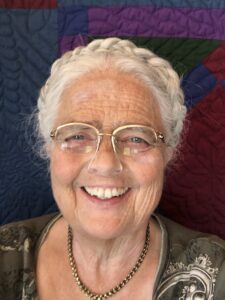
“What’s a farmer’s daughter doing here anyway?” A Manhattan-born-and-bred curmudgeon on my dissertation committee asked this first question at my PhD defense in 1974. I felt a bit back then as I do now when asked to write about how my work came to be the foundation for such an exhibition as this.
Back in 1974, I enjoyed reflecting on how my agrarian childhood values led me to do a philosophical investigation of the reasoning of art historians. In the intervening 46 years, my work has evolved and broadened, and I have come to understand that it was in leaving my beloved, isolated farm life to live as a 17-year-old high school foreign exchange student that brought me to the privileged position of co-curating this exhibition.
In Denmark, I was immersed within a family, school, and culture that I grew to love and whose ideas and values led its members to see events in the United States through very different eyes than mine. Their questions about events like the Cuban missile crisis and the assassination of civil rights activist Medgar Evers in Mississippi were not easy for me to explain. By the time I returned to Illinois after 14 months, I had difficulty responding to Americans’ questions about Denmark, complicated by the fact that, for a week or two my thinking was in Danish and I struggled to speak English.
I thought I’d had enough of highly competitive Danish schooling, six days a week, 11 months of the year, and briefly contemplated getting a live-in cleaning lady job at a fancy house on Lake Shore Drive in Chicago. My mother urged me to give college a try.
Since our little rural school had no art program, and because I was considered a “good drawer” in my class, I figured art would be the easy way to go. I soon learned how much I didn’t know I didn’t know. Then in my first art history class, I found a key that opened doors to cultures all over the world throughout human history. And the rest is, as they say, history. In the words my late sister used to introduce me: “This is my sister, Mary. She’s saving the world through art education.”
I am grateful to all the students, art teachers, faculty colleagues, and museum educators with whom I’ve collaborated and who challenged me through the years. The evolution of Viewpoints, in particular, was inspired by conversations with Michael Parsons (Ohio State University), began to crystallize in debates with Faith Clover (University of Minnesota), moved into the museum world through the thesis research of and later collaborative projects with Michelle Nichols Dock (Tempe Center for the Arts) and Laura Hales (Scottsdale Arts), found deeper theoretical foundations in collaborations with Pat Villeneuve (Florida State University), was sharpened in consultation with Tom Schantz (Kutztown University of Pennsylvania), and came to fruition in partnership with Laura Hales.
Viewpoints in Action
Let’s look at one painting through five different Viewpoints:
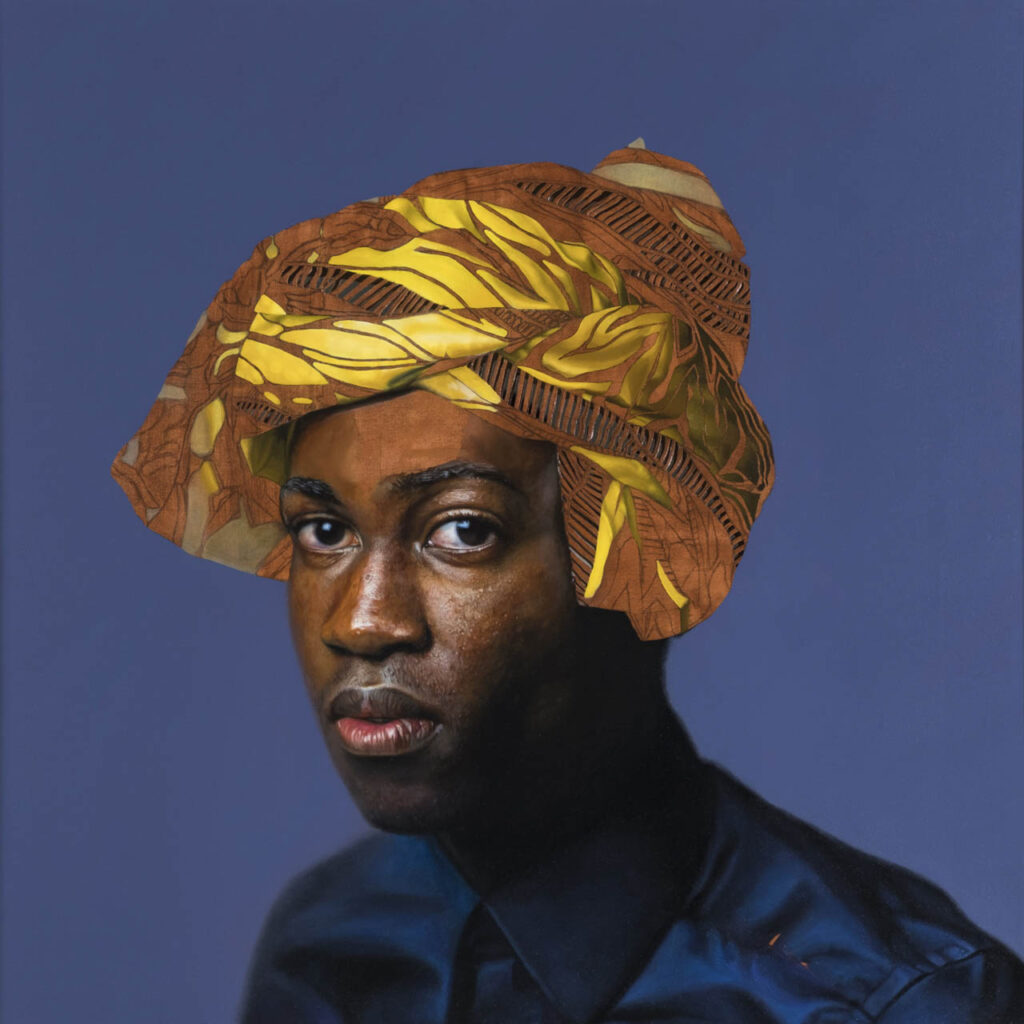
Papay Solomon, born in Guinea of Liberian descent, lives and works in Phoenix, AZ.
K.O.S. (Knowledge of Self), 2018
Oil on canvas
36″ x 36″
Collection of David and Leenie Engel
NON-REFLECTIVE: Everyone has a first impression that attracts us to one artwork more than another. For example, we may respond to familiar subject matter, prefer sculpture to painting, or be drawn to a favorite color.
That young man looks like one of my friends.
The blue in the background is my favorite color.
BEAUTY, REALISM, OR SKILL: Many of us particularly admire artwork that we think is beautiful, realistic, or skillfully made.
This portrait is very realistic; it almost looks like a photograph.
The face and fabric are meticulously and skillfully rendered.
EXPRESSION OF FEELINGS: Some of us see artworks as expressive and prize an artwork for its compelling emotion.
This portrait expresses dignity and solemnity.
I appreciate portraits because they always express the sitter’s emotions.
MODERN-TO-CONTEMPORARY ARTWORLD: If we’ve studied 20th century or contemporary art in school or learned about recent art on our own, we begin to understand how critics, art historians, and other art experts value the art of today.
Contemporary artists, such as Kehinde Wiley, Amoako Boafo, and Akunyili Crosby, are among many artists today who are known for their portraits of young Black men.
The use of complementary colors (indigo and yellow orange) creates tension and interest.
PLURAL ARTWORLDS: If we have learned about how and why art was prized in the past or how and why it is valued in other cultures and if we appreciate that art was or is made and admired differently through time and across the globe, we are motivated to seek information and insights from experts.
Does the artist’s decision to juxtapose two different styles of dress indicate two cultural identities? Is this a portrait of someone living in or in between two worlds?
“I’m basically trying to question what it means to be finished, what it means to be complete, what it means to be fully African, what it means to be fully American. So I just let it sit in the middle where it belongs, just like me.” — Papay Solomon
What is your Viewpoint?
Step 1: Click on square to see detailed image.
Step 2: Choose your response to the five questions to learn about which Viewpoint you used.
Credit: Viewpoints Activity icons designed by Larry Yanez
Viewpoints Definitions
Below are all the possible results the above activity could have shown as a result of your answers.
NON-REFLECTIVE
Everyone has a first impression that attracts us to one artwork more than another. For example we may respond to familiar subject matter, prefer sculpture to painting, or be drawn to a favorite color.
BEAUTY, REALISM, OR SKILL
Many of us particularly admire artwork that we think is beautiful, realistic, or skillfully made.
EXPRESSION OF FEELINGS
Some of us see artworks as expressive and prize an artwork for its compelling emotion.
MODERN-TO-CONTEMPORARY ARTWORLD
If we’ve studied 20th century or contemporary art in school or learned about recent art on our own, we begin to understand how critics, art historians, and other art experts value the art of today. (NOTE: The responses in this activity are based on art expectations and standards of the recent mainstream U.S. artworld. If you have studied or participated in another current artworld, substitute appropriate expectations and standards of that artworld—for example, current Australian Aboriginal art, today’s Navajo weavings, or graphic novels.)
PLURAL ARTWORLDS
If we have learned about how and why art was prized in the past or how and why it is valued in other cultures, we appreciate that art was or is made and admired differently through time and across the globe, and we are motivated to seek information and insights from experts.
Virtual Viewing
Viewpoints Exhibition Virtual Reception Video
The virtual reception for this exhibition features Dr. Mary Erickson talking about the way we look at art and guest appearances by artists Henry Schoebel, Diane Silver, Fausto Fernandez, and Papay Solomon.
The Center Space and ArtReach galleries have been impacted by the COVID-19 pandemic. For current hours at Scottsdale Center for the Performing Arts, please click here.

